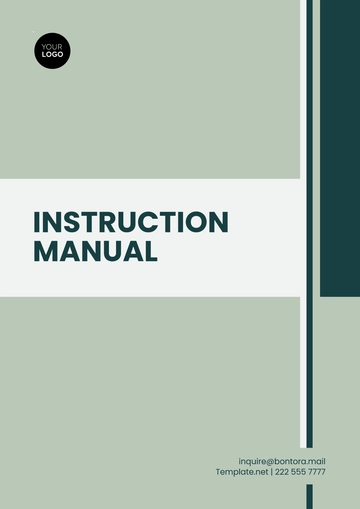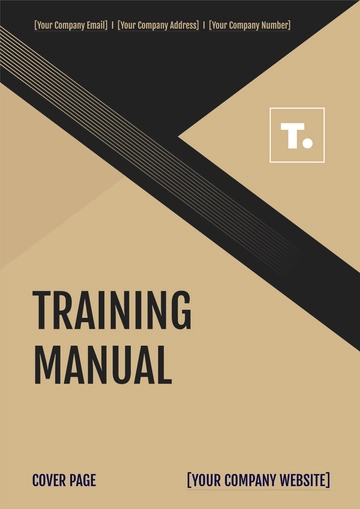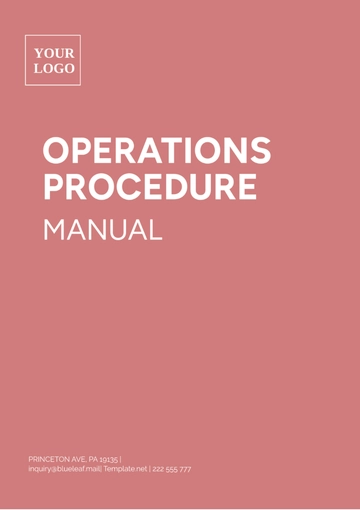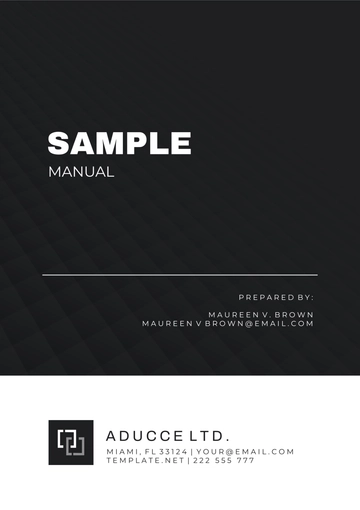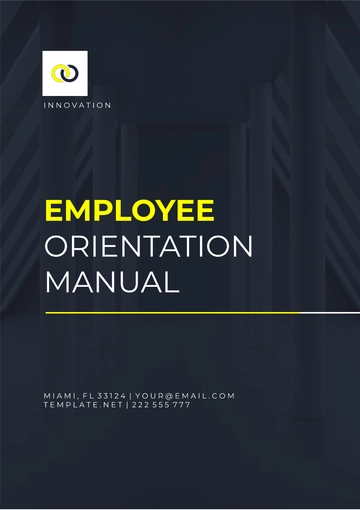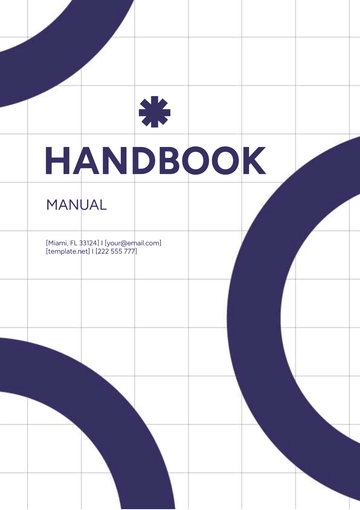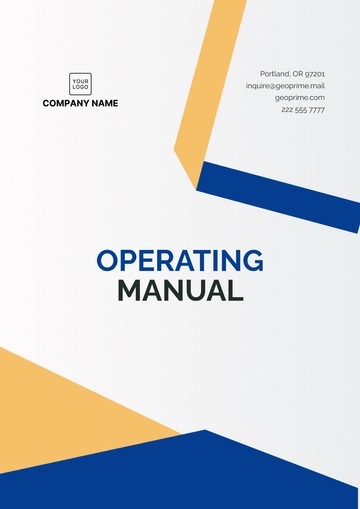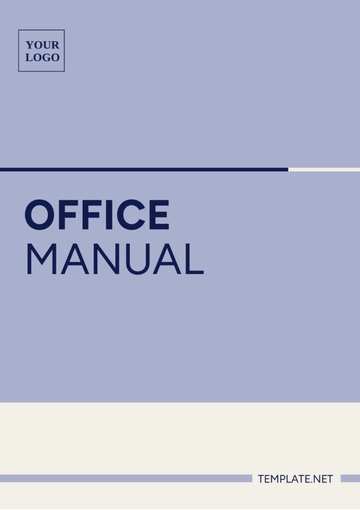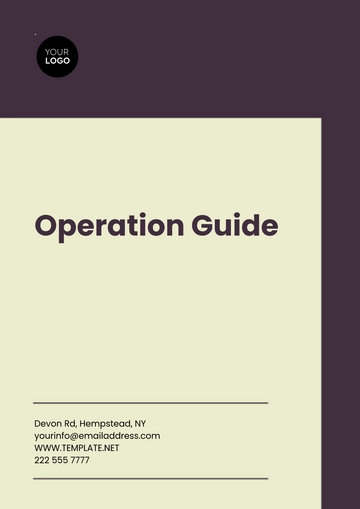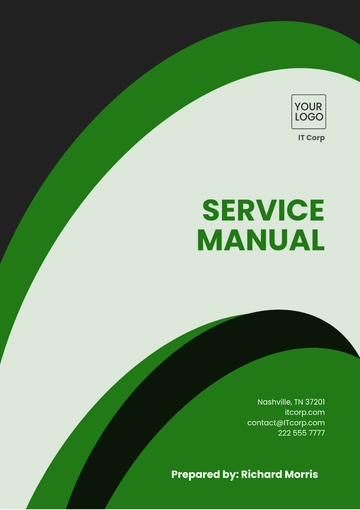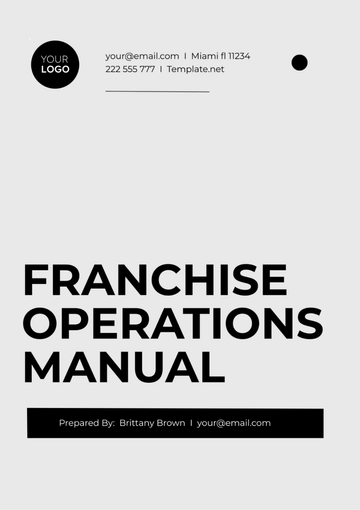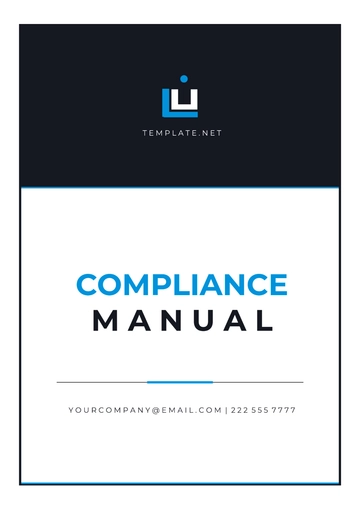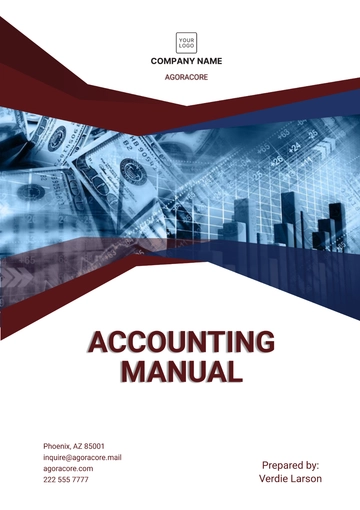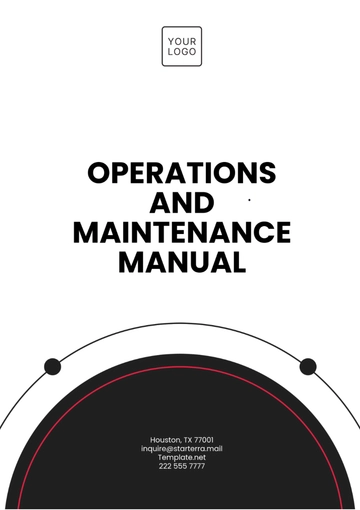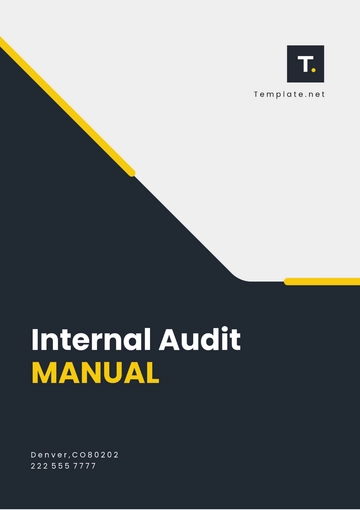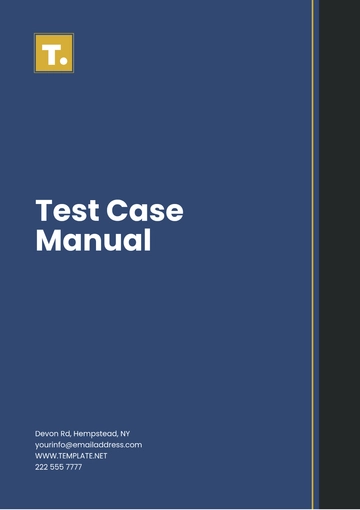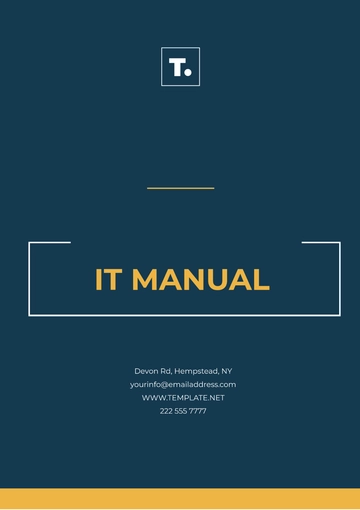Free Agriculture Financial Training Manual

I. Introduction
A. Purpose
The purpose of this training manual is to provide comprehensive financial knowledge and skills to employees of [Your Company Name]. This manual aims to equip staff with the necessary tools to effectively manage financial processes, ensure accurate financial reporting, and make informed financial decisions that contribute to the overall success of the company.
B. Scope
This manual covers a wide range of financial topics relevant to the agriculture industry. It includes fundamental financial concepts, budgeting and forecasting, financial reporting, cost management, and investment strategies. The manual also outlines specific financial processes and procedures used within [Your Company Name], ensuring that employees are well-versed in company-specific practices.
C. Target Audience
The target audience for this manual includes all employees involved in financial operations at [Your Company Name]. This includes finance and accounting personnel, farm managers, and other staff members who play a role in financial decision-making and reporting. The manual is designed to be accessible to both new hires and experienced employees, providing a valuable resource for ongoing financial training and development.
II. Financial Fundamentals
A. Key Financial Concepts
Understanding key financial concepts is essential for effective financial management. This section introduces basic financial principles that underpin the financial operations of [Your Company Name].
Revenue and Expenses: Revenue refers to the income generated from business activities, while expenses are the costs incurred to generate revenue. Managing the balance between revenue and expenses is crucial for profitability.
Assets and Liabilities: Assets are resources owned by the company that provide future economic benefits. Liabilities are obligations that the company must settle in the future. The difference between assets and liabilities is equity.
Cash Flow: Cash flow represents the movement of money in and out of the business. Positive cash flow ensures that the company can meet its obligations and invest in growth opportunities.
Profitability Ratios: Profitability ratios, such as gross profit margin and net profit margin, measure the company's ability to generate profit relative to revenue and expenses. These ratios provide insights into financial performance.
Budgeting: Budgeting involves planning and controlling financial resources to achieve business objectives. It includes setting financial goals, forecasting income and expenses, and monitoring performance against the budget.
B. Financial Statements
Financial statements provide a snapshot of the company's financial position and performance. This section covers the three primary financial statements used by [Your Company Name].
Income Statement: The income statement, also known as the profit and loss statement, shows the company's revenue, expenses, and net profit over a specific period. It provides insights into profitability and operational efficiency.
Balance Sheet: The balance sheet provides a snapshot of the company's financial position at a specific point in time. It lists assets, liabilities, and equity, showing the company's overall financial health.
Cash Flow Statement: The cash flow statement tracks the flow of cash in and out of the business over a specific period. It highlights operating, investing, and financing activities, providing insights into liquidity and cash management.
Statement of Changes in Equity: This statement shows changes in the company's equity over a specific period. It includes contributions from owners, distributions to owners, and retained earnings.
C. Financial Metrics and Ratios
Financial metrics and ratios are used to evaluate the company's financial performance and compare it to industry benchmarks.
Liquidity Ratios: Liquidity ratios, such as the current ratio and quick ratio, measure the company's ability to meet short-term obligations. A higher ratio indicates better liquidity.
Solvency Ratios: Solvency ratios, such as the debt-to-equity ratio, measure the company's ability to meet long-term obligations. A lower ratio indicates better solvency.
Efficiency Ratios: Efficiency ratios, such as inventory turnover and accounts receivable turnover, measure how effectively the company manages its assets and liabilities.
Profitability Ratios: Profitability ratios, such as return on assets (ROA) and return on equity (ROE), measure the company's ability to generate profit from its assets and equity.
Understanding these financial fundamentals is crucial for effective financial management and decision-making. By mastering these concepts, employees can contribute to the financial success and sustainability of [Your Company Name].
III. Budgeting and Forecasting
A. Budget Preparation
The budgeting process is essential for planning and controlling financial resources. The following table provides an overview of the budgeting steps:
No. | Step | Description |
|---|---|---|
1 | Define Objectives | Set financial goals and objectives for the period. |
2 | Gather Data | Collect historical financial data and market information. |
3 | Develop Assumptions | Make assumptions about future revenue and expenses. |
4 | Create Budget | Prepare the budget based on defined objectives and assumptions. |
5 | Review and Approve | Review the budget with key stakeholders and obtain approval. |
Define Objectives: Set clear and measurable financial goals for the budget period. These goals should align with the company's strategic objectives. Objectives may include revenue targets, expense limits, and profit margins. Clear objectives provide direction and focus for the budgeting process.
Gather Data: Collect historical financial data to identify trends and patterns. This data provides a baseline for forecasting future financial performance. Gather market information, including economic conditions and industry trends. This information helps in making informed assumptions about future revenue and expenses.
Develop Assumptions: Make realistic assumptions about future revenue and expenses based on historical data and market information. Assumptions should be based on sound reasoning and supported by data. Consider factors such as seasonal trends, market conditions, and potential risks. Accurate assumptions are crucial for preparing a realistic and achievable budget.
Create Budget: Prepare the budget by allocating resources to different expense categories and revenue streams. Ensure that the budget aligns with defined objectives and assumptions. Use budgeting software or spreadsheets to organize and calculate budget figures. A well-prepared budget provides a roadmap for financial performance.
Review and Approve: Review the budget with key stakeholders, including department heads and senior management. Ensure that the budget is realistic, achievable, and aligned with strategic objectives. Obtain approval from relevant stakeholders before finalizing the budget. Approval ensures that all parties are committed to achieving the budget goals.
The budgeting process is crucial for planning and controlling financial resources. By following these steps, [Your Company Name] can create a realistic and achievable budget that supports strategic objectives and financial performance.
B. Financial Forecasting
Revenue Forecasting: Revenue forecasting involves predicting future revenue based on historical data and market trends. Accurate revenue forecasting is crucial for planning and decision-making. Use statistical methods and financial models to estimate future revenue. Consider factors such as sales trends, market conditions, and competitive landscape.
Expense Forecasting: Expense forecasting involves predicting future expenses based on historical data and budget assumptions. Accurate expense forecasting helps in managing costs and achieving financial goals. Use historical data and market information to estimate future expenses. Consider factors such as inflation, cost trends, and business activities.
Cash Flow Forecasting: Cash flow forecasting involves predicting future cash inflows and outflows based on revenue and expense forecasts. Accurate cash flow forecasting is crucial for liquidity management. Use financial models to estimate future cash flows. Consider factors such as payment terms, collection periods, and capital expenditures.
Scenario Analysis: Scenario analysis involves evaluating different financial scenarios based on varying assumptions. Scenario analysis helps in identifying potential risks and opportunities. Use financial models to simulate different scenarios. Consider factors such as market conditions, economic trends, and business activities.
Forecast Review and Adjustment: Review and adjust financial forecasts regularly based on actual performance and changing conditions. Regular review and adjustment ensure that forecasts remain accurate and relevant. Use performance data and market information to update forecasts. Regular review and adjustment support effective financial planning and decision-making.
Financial forecasting is essential for planning and decision-making. By following these steps, [Your Company Name] can create accurate and reliable financial forecasts that support strategic objectives and financial performance.
IV. Financial Reporting
A. Income Statement Reporting
The income statement, also known as the profit and loss statement, provides insights into the company's profitability and operational efficiency. The following table presents an overview of the income statement preparation steps:
No. | Step | Description |
|---|---|---|
1 | Revenue Recognition | Identify and record revenue from business activities. |
2 | Expense Recording | Identify and record expenses incurred during the period. |
3 | Gross Profit Calculation | Calculate gross profit by subtracting COGS from revenue. |
4 | Operating Profit Calculation | Calculate operating profit by subtracting operating expenses from gross profit. |
5 | Net Profit Calculation | Calculate net profit by subtracting non-operating expenses from operating profit. |
Revenue Recognition: Identify and record revenue from business activities during the reporting period. Revenue recognition follows accounting principles and guidelines.
Expense Recording: Identify and record expenses incurred during the reporting period. Expense recording follows accounting principles and guidelines.
Gross Profit Calculation: Calculate gross profit by subtracting the cost of goods sold (COGS) from revenue. Gross profit provides insights into the profitability of core business activities.
Operating Profit Calculation: Calculate operating profit by subtracting operating expenses from gross profit. Operating profit provides insights into the profitability of business operations.
Net Profit Calculation: Calculate net profit by subtracting non-operating expenses from operating profit. Net profit provides insights into the overall profitability of the company.
The income statement preparation process is crucial for financial reporting. By following these steps, [Your Company Name] can create accurate and reliable income statements that provide insights into profitability and operational efficiency.
B. Cash Flow Statement Reporting
Operating Activities: Record cash inflows and outflows related to business operations. Operating activities include cash receipts from sales and cash payments for expenses.
Investing Activities: Record cash inflows and outflows related to investing activities. Investing activities include cash payments for capital expenditures and cash receipts from asset sales.
Financing Activities: Record cash inflows and outflows related to financing activities. Financing activities include cash receipts from loans and cash payments for debt repayments.
Cash Flow Reconciliation: Reconcile cash flow statements with bank statements to ensure accuracy. Cash flow reconciliation involves comparing recorded cash flows with actual bank transactions.
Cash Flow Analysis: Analyze cash flow statements to identify trends and patterns. Cash flow analysis provides insights into liquidity and cash management.
The cash flow statement preparation process is crucial for financial reporting. By following these steps, [Your Company Name] can create accurate and reliable cash flow statements that provide insights into liquidity and cash management.
V. Cost Management
A. Cost Control
Effective cost control is essential for managing expenses and achieving financial goals. The following table presents an overview of the cost control steps:
No. | Step | Description |
|---|---|---|
1 | Identify Cost Drivers | Identify key factors that drive costs. |
2 | Set Cost Targets | Set cost targets based on budget and financial goals. |
3 | Implement Cost Control Measures | Implement measures to control and reduce costs. |
4 | Monitor Cost Performance | Monitor cost performance against targets. |
5 | Adjust Cost Control Measures | Adjust measures based on performance and changing conditions. |
Identify Cost Drivers: Identify key factors that drive costs in the business. Cost drivers may include production volume, labor, and materials. Use cost driver analysis to understand the factors influencing costs. Accurate identification of cost drivers is crucial for effective cost control.
Set Cost Targets: Set cost targets based on the budget and financial goals. Cost targets provide benchmarks for managing expenses. Ensure that cost targets are realistic and achievable. Accurate cost targets are crucial for effective cost control.
Implement Cost Control Measures: Implement measures to control and reduce costs. Cost control measures may include process improvements, resource optimization, and waste reduction. Ensure that cost control measures are aligned with business objectives. Effective cost control measures are crucial for managing expenses.
Monitor Cost Performance: Monitor cost performance against targets. Cost performance monitoring involves tracking actual expenses and comparing them to cost targets. Use cost performance data to identify variances and areas for improvement. Accurate cost performance monitoring is crucial for effective cost control.
Adjust Cost Control Measures: Adjust cost control measures based on performance and changing conditions. Adjustments may include modifying processes, reallocating resources, and updating cost targets. Ensure that adjustments are timely and aligned with business objectives. Effective adjustments are crucial for maintaining cost control.
The cost control process is crucial for managing expenses and achieving financial goals. By following these steps, [Your Company Name] can implement effective cost control measures that support financial performance.
B. Cost Reduction Strategies
Process Improvement: Implement process improvement initiatives to enhance efficiency and reduce costs. Process improvement involves identifying and eliminating inefficiencies.
Resource Optimization: Optimize the use of resources, including labor, materials, and equipment. Resource optimization involves maximizing the value derived from resources.
Waste Reduction: Implement waste reduction initiatives to minimize waste and reduce costs. Waste reduction involves identifying and eliminating wasteful practices.
Supplier Management: Manage supplier relationships to negotiate better terms and reduce costs. Supplier management involves evaluating and selecting suppliers based on cost and quality.
Technology Investment: Invest in technology to improve productivity and reduce costs. Technology investment involves evaluating and selecting technology solutions based on cost and benefits.
The cost reduction process is crucial for managing expenses and achieving financial goals. By following these steps, [Your Company Name] can implement effective cost reduction strategies that support financial performance.
VI. Financial Processes
A. Accounts Receivable Management
Effective accounts receivable management is essential for maintaining cash flow and financial stability. The following table presents an overview of the accounts receivable management steps:
No. | Step | Description |
|---|---|---|
1 | Customer Credit Assessment | Assess the creditworthiness of customers. |
2 | Invoicing | Issue invoices promptly and accurately. |
3 | Payment Follow-Up | Follow up on overdue payments. |
4 | Cash Application | Apply cash receipts to customer accounts. |
5 | Dispute Resolution | Resolve payment disputes promptly. |
Customer Credit Assessment: Assess the creditworthiness of customers before extending credit. Credit assessment involves evaluating the financial stability and payment history of customers.
Invoicing: Issue invoices promptly and accurately. Invoicing involves generating and sending invoices to customers for goods or services provided. Use invoicing software or systems to streamline the invoicing process.
Payment Follow-Up: Follow up on overdue payments to ensure timely collection. Payment follow-up involves contacting customers to remind them of outstanding invoices.
Cash Application: Apply cash receipts to customer accounts promptly and accurately. Cash application involves recording payments received from customers.
Dispute Resolution: Resolve payment disputes promptly to ensure timely collection. Dispute resolution involves addressing and resolving customer concerns related to invoices.
The accounts receivable management process is crucial for maintaining cash flow and financial stability. By following these steps, [Your Company Name] can implement effective accounts receivable management practices that support financial performance.
B. Payroll Management
Employee Data Management: Manage employee data accurately and securely. Employee data management involves maintaining accurate records of employee information.
Payroll Calculation: Calculate payroll accurately based on employee data and company policies. Payroll calculation involves determining employee wages, deductions, and benefits.
Payroll Disbursement: Disburse payroll promptly and accurately. Payroll disbursement involves transferring employee wages to their bank accounts.
Payroll Reporting: Generate payroll reports for compliance and management purposes. Payroll reporting involves creating reports on payroll activities and expenses.
Payroll Compliance: Ensure compliance with payroll regulations and company policies. Payroll compliance involves adhering to legal and regulatory requirements related to payroll.
The payroll management process is crucial for managing employee compensation and compliance. By following these steps, [Your Company Name] can implement effective payroll management practices that support financial performance and employee satisfaction.
VII. Investment Strategies
A. Capital Investment
Capital investment involves allocating financial resources to long-term assets that generate future economic benefits. The following table presents an overview of the capital investment steps:
No. | Step | Description |
|---|---|---|
1 | Identify Investment Opportunities | Identify potential investment opportunities. |
2 | Conduct Feasibility Analysis | Evaluate the feasibility of investment opportunities. |
3 | Prepare Investment Plan | Develop a detailed investment plan. |
4 | Obtain Approval | Obtain approval for the investment plan. |
5 | Implement Investment | Execute the investment plan. |
Identify Investment Opportunities: Identify potential investment opportunities that align with the company's strategic objectives. Investment opportunities may include new projects, equipment, and technology.
Conduct Feasibility Analysis: Evaluate the feasibility of investment opportunities based on financial, operational, and market factors. Feasibility analysis involves assessing the potential benefits and risks of investments.
Prepare Investment Plan: Develop a detailed investment plan that outlines the objectives, scope, and timeline of the investment. The investment plan includes financial projections, resource requirements, and risk management strategies.
Obtain Approval: Obtain approval for the investment plan from relevant stakeholders. Approval involves presenting the investment plan to senior management and obtaining their endorsement.
Implement Investment: Execute the investment plan according to the defined objectives, scope, and timeline. Implementation involves allocating resources, managing activities, and monitoring progress.
The capital investment process is crucial for allocating financial resources to long-term assets that generate future economic benefits. By following these steps, [Your Company Name] can implement effective capital investment practices that support strategic objectives and financial performance.
B. Risk Management
Risk Identification: Identify potential risks associated with investments. Risk identification involves evaluating internal and external factors that may impact investments.
Risk Analysis: Analyze the potential impact and likelihood of identified risks. Risk analysis involves evaluating the potential consequences of risks on investments.
Risk Mitigation: Develop strategies to mitigate identified risks. Risk mitigation involves implementing measures to reduce the potential impact and likelihood of risks.
Risk Monitoring: Monitor risks throughout the investment lifecycle. Risk monitoring involves tracking risk indicators and evaluating the effectiveness of mitigation measures.
Risk Reporting: Report risks to relevant stakeholders. Risk reporting involves communicating risk information to senior management and other stakeholders.
The risk management process is crucial for managing potential risks associated with investments. By following these steps, [Your Company Name] can implement effective risk management practices that support investment management and financial performance.
VIII. Financial Analysis
A. Financial Performance Analysis
Financial performance analysis involves evaluating the company's financial performance based on financial statements and metrics. The following table presents an overview of the financial performance analysis steps:
No. | Step | Description |
|---|---|---|
1 | Revenue Analysis | Evaluate revenue trends and patterns. |
2 | Expense Analysis | Evaluate expense trends and patterns. |
3 | Profitability Analysis | Evaluate profitability metrics and ratios. |
4 | Liquidity Analysis | Evaluate liquidity metrics and ratios. |
5 | Solvency Analysis | Evaluate solvency metrics and ratios. |
Revenue Analysis: Evaluate revenue trends and patterns based on historical data and market information. Revenue analysis involves identifying factors that influence revenue growth and decline.
Expense Analysis: Evaluate expense trends and patterns based on historical data and budget information. Expense analysis involves identifying factors that influence expense growth and decline.
Profitability Analysis: Evaluate profitability metrics and ratios based on financial statements. Profitability analysis involves assessing the company's ability to generate profit relative to revenue and expenses.
Liquidity Analysis: Evaluate liquidity metrics and ratios based on financial statements. Liquidity analysis involves assessing the company's ability to meet short-term obligations.
Solvency Analysis: Evaluate solvency metrics and ratios based on financial statements. Solvency analysis involves assessing the company's ability to meet long-term obligations.
The financial performance analysis process is crucial for evaluating the company's financial performance. By following these steps, [Your Company Name] can implement effective financial performance analysis practices that support financial management and decision-making.
B. Investment Analysis
Return on Investment (ROI): Evaluate the return on investment (ROI) for capital investments. ROI analysis involves assessing the financial benefits of investments relative to their costs.
Net Present Value (NPV): Evaluate the net present value (NPV) of capital investments. NPV analysis involves assessing the present value of future cash flows generated by investments.
Internal Rate of Return (IRR): Evaluate the internal rate of return (IRR) for capital investments. IRR analysis involves assessing the discount rate that makes the present value of future cash flows equal to the investment cost.
Payback Period: Evaluate the payback period for capital investments. Payback period analysis involves assessing the time required to recover the investment cost.
Profitability Index (PI): Evaluate the profitability index (PI) for capital investments. PI analysis involves assessing the ratio of the present value of future cash flows to the investment cost.
The investment analysis process is crucial for evaluating the performance of capital investments. By following these steps, [Your Company Name] can implement effective investment analysis practices that support investment management and financial performance.
IX. Frequently Asked Questions (FAQs)
Q: How is the budget prepared?
A: The budget preparation process involves defining objectives, estimating revenues and expenses, and developing a comprehensive financial plan.
Q: What is the importance of financial analysis?
A: Financial analysis is crucial for evaluating the company's financial performance, identifying trends, and making informed financial decisions.
Q: How are capital investments evaluated?
A: Capital investments are evaluated using financial metrics such as ROI, NPV, IRR, payback period, and PI.
Q: What are some common cost control measures?
A: Common cost control measures include process improvement, resource optimization, waste reduction, supplier management, and technology investment.
Q: How is risk management implemented in investments?
A: Risk management involves identifying, analyzing, mitigating, monitoring, and reporting risks associated with investments.
Q: What is the role of financial reporting?
A: Financial reporting involves creating accurate and reliable financial statements that provide insights into the company's financial performance and compliance with regulations.
Q: How are financial ratios used in analysis?
A: Financial ratios are used to evaluate profitability, liquidity, and solvency based on financial statements, providing insights into financial performance.
- 100% Customizable, free editor
- Access 1 Million+ Templates, photo’s & graphics
- Download or share as a template
- Click and replace photos, graphics, text, backgrounds
- Resize, crop, AI write & more
- Access advanced editor
Develop comprehensive training programs with our Agriculture Financial Training Manual Template from Template.net! This template features editable sections to customize the content to your financial training needs. Customizable fields and the AI Editor Tool helps streamline the process, ensuring accurate and detailed training manual creation tailored to your agricultural business!
